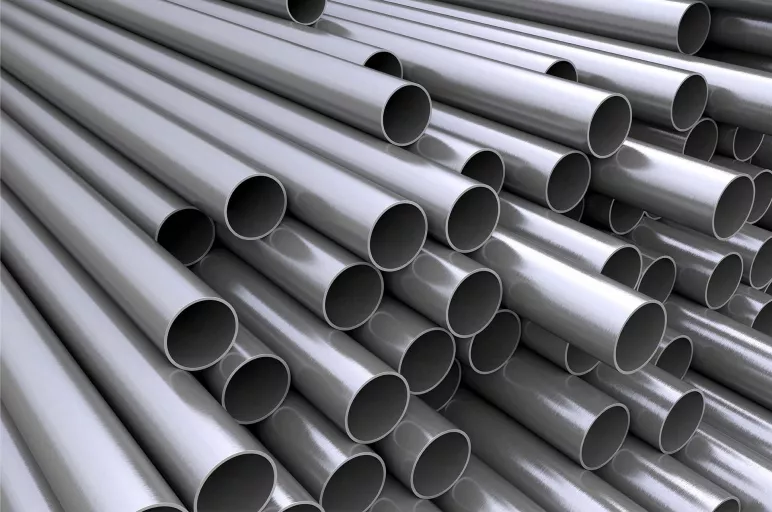
Why the Future of Steel is Green
- Steel production currently accounts for 7-8% of global carbon emissions, making decarbonization a global prime concern.
- Emerging technical developments can help reduce emissions and drive the transition to more sustainable production of steel.
- The utilization of green steel is more likely to witness an upward demand trend on the back of rising government regulation worldwide.
September 03, 2022 | Market Intelligence 4 minutes read
The steel industry is one of the most energy-intensive industries in the world, accounting for nearly 8 % of global energy consumption. Most of the steel production facilities are coal-based, making it one of the largest contributors to carbon emission.
In 2020, every metric tonne of steel produced contributed to 1.85 metric tonnes of CO2 being discharged into the atmosphere. In the same year, 1.86 billion metric tonnes of steel were manufactured, with total direct emissions of 2.6 billion metric tonnes, accounting for between 7% and 9% of global anthropogenic CO2 emissions.
Steel Manufacturers Must Take Responsibility
The use of outdated steel production techniques is a key reason of energy inefficiency and environmental damage.
Steelmakers must initiate the decarbonization process in the industry and take steps to curb emissions and specific energy usage.
Major industrial players, such as ArcelorMittal and Tata Steel, have announced decarbonization commitments.
For instance, in July 2022, Tata Steel and BHP, a major global resources firm, signed a Memorandum of Understanding (MoU) to collaborate and research on low carbon iron and steelmaking technology.
Green steel could be one possible solution in this direction. Green steel is defined as steel manufactured through a method that reduces standard emissions and emits less carbon throughout the process.
Companies are Developing New Technologies to Produce Green Steel:
|
Companies |
Emerging technologies for CO2 reduction and green steel production |
|
EIT InnoEnergy and Scania: Hydrogen Steel Plant |
Hydrogen can be used in a total carbon dioxide-free method of producing steel, according to experts. Scania, a Swedish truck manufacturer, and EIT InnoEnergy, a sustainable innovations accelerator, have partnered to reduce CO2 emissions during the production of steel. They are creating H2 Green Steel, a fully operational commercial hydrogen steel facility. According to the partners, the project would generate 5 million metric tonnes of green steel by 2024, making it the largest green steel plant in the world. |
|
Boston Metal: Molten Oxide Electrolysis |
Molten oxide electrolysis, a new method developed at the Massachusetts Institute of Technology (MIT), proposes to separate oxygen from iron ore using electricity and producing O2 as a byproduct instead of CO2. Boston Metal has been assigned with commercializing this technique for the steel industry. The startup intends to bring its laboratory success to market in the next two to three years. It is focusing on regions with easy access to renewable energy, such as Europe, Canada, and Australia, because the electrolysis process, like hydrogen steel, requires enormous amounts of clean power to keep the process carbon-free all the way down the pipeline. |
Adoption of New Technologies by Steelmakers to Reduce GHG Emissions
Leading steel and mining firms are adopting a variety of methods to reduce Greenhouse Gas (GHG) emissions, which are as follows:
- Improving the efficiency of blast furnaces (BOFs) to reduce energy consumption and output losses
- Capturing carbon emissions for reuse in the development of new products in the chemical industry
- Increasing scrap steel recycling using more environment-friendly electric arc furnaces (EAF)
- Developing and commercializing transformative, low-impact technologies like Hydrogen-Based Direct Reduction Iron (DRI)
All these activities will help to reduce steel's environmental footprint, and hi-tech breakthroughs such as hydrogen DRI are likely to have strong influence.
ArcelorMittal, one of the world's major steelmakers, has established a comprehensive and well-regarded green steel roadmap and employs a mix of smart carbon technologies, including hydrogen-based DRI. With the help of these technologies, steel manufacturers have already produced ‘green steel’ on a small scale and released a new line of low-emissions products.
Also Read: Supply Chain Transformation in The Steel Industry
Major Businesses Commit To 100% Net-Zero Steel
On May 31, 2022, Iberdrola, Siemens Gamesa, Vattenfall BA Wind, and Volvo Cars joined the international initiative SteelZero, which is led by the Climate Group in collaboration with Responsible Steel and announced their commitment to 100% net-zero steel. All of them have set ambitious intermediate targets of employing 50% low-emission steel by 2030, paving the way to net-zero emissions by 2050.
Future of Green Steel and the Steel Industry
Political forces are expected to strengthen the push for green steel production in the coming years. Governments around the world are under pressure to lessen their countries' environmental effects; the most likely conclusion of this trend is tighter regulations on significant greenhouse gas generating sectors.
Carbon taxes, R&D support/rebates, or stricter environmental rules on new installations are all likely to result in a new steel production technique that emits fewer greenhouse gases.
Steel is one of the most sustainable materials in the world, as it is permanent, infinitely reusable, and the most recycled substance on the planet. Thus, developing more environment-friendly steel products is a long-term investment that can deliver huge environmental advantages over the entire life cycle of steel.
Links: -
https://cen.acs.org/environment/green-chemistry/steel-hydrogen-low-co2-startups/99/i22
https://www.iea.org/reports/iron-and-steel-technology-roadmap



